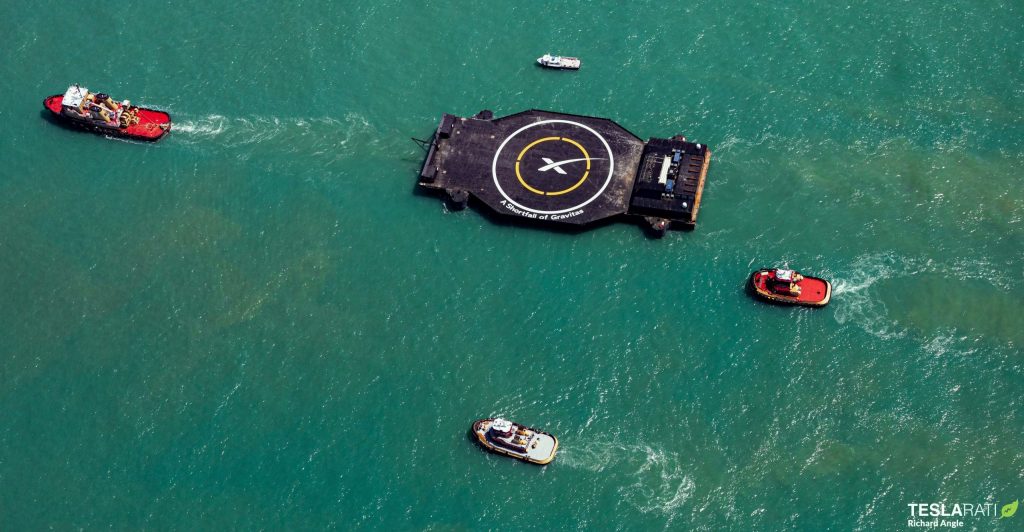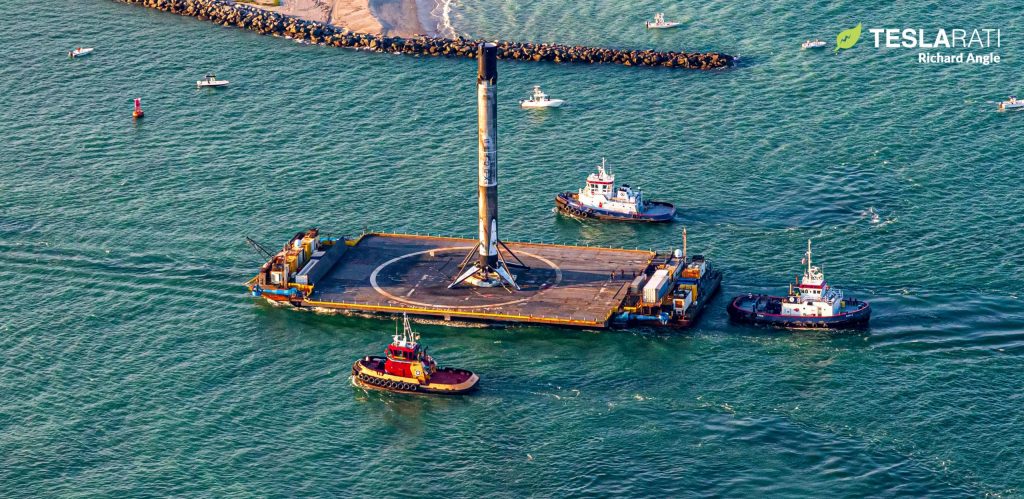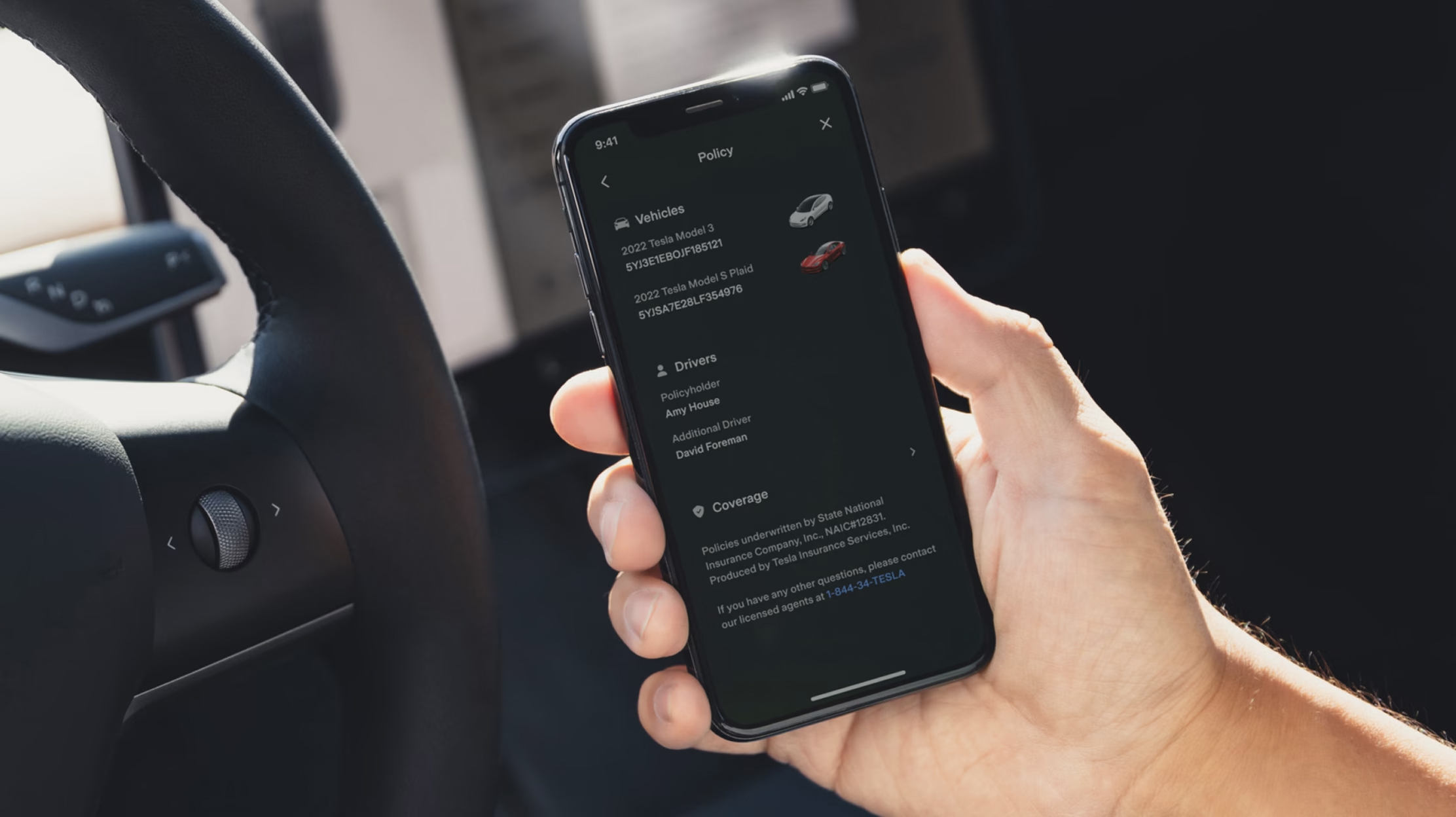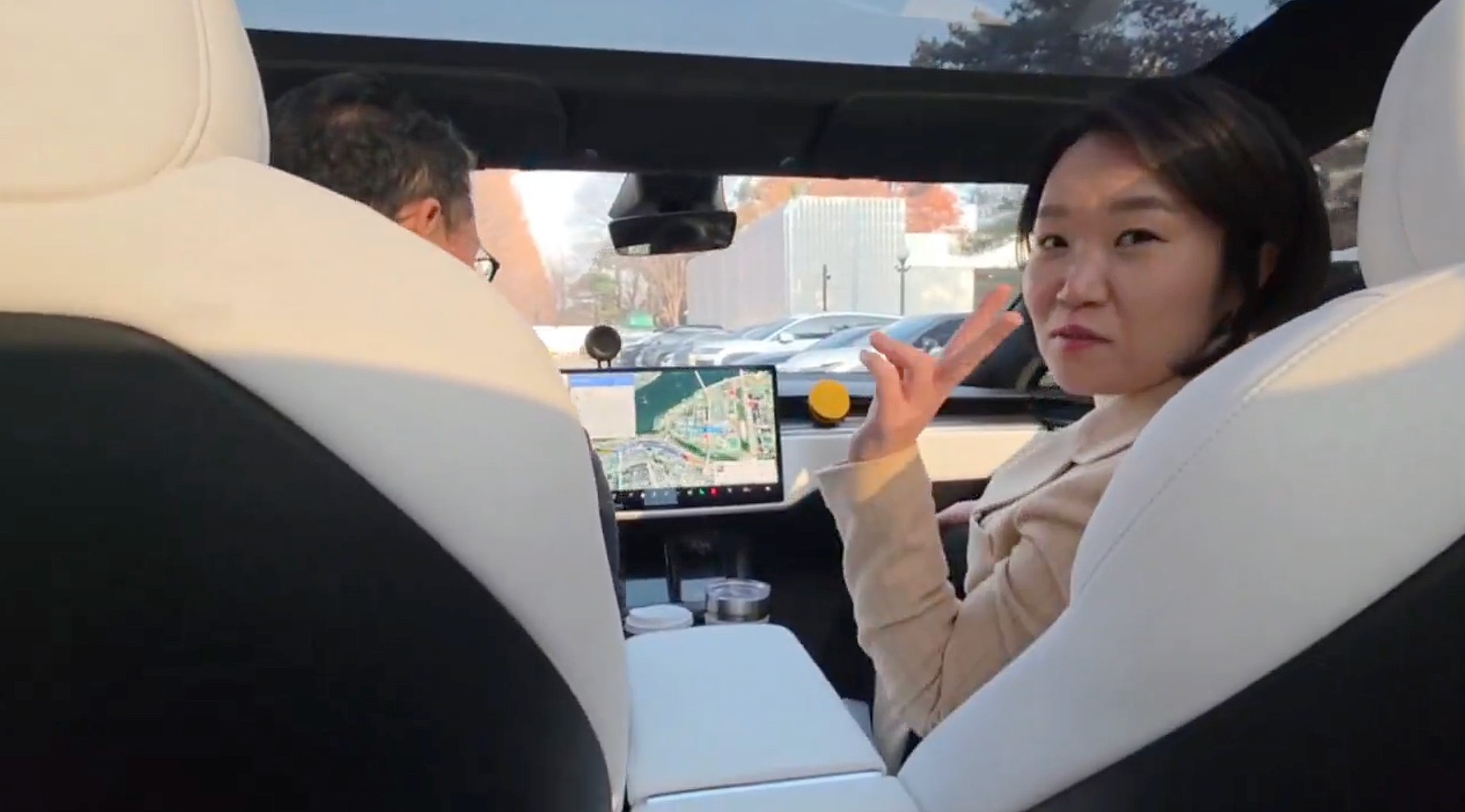

News
SpaceX’s first “Version 3” drone ship arrives at Port Canaveral
SpaceX has officially taken delivery of a third ‘autonomous spaceport drone ship’ named A Shortfall of Gravitas (ASOG), returning its East Coast booster recovery fleet to two strong.
Five weeks prior, senior drone ship Of Course I Still Love You (OCISLY) began a more than 8000 km (~5000 mi) journey from Port Canaveral, Florida to Port of Long Beach, California as part of SpaceX’s plans to return its West Coast launch facilities to active duty. Though it now appears that plans to begin the first dedicated polar Starlink launches out of Vandenberg Air Force Base (VAFB) as soon as July have slipped to no earlier than (NET) August, drone ship OCISLY did arrive at its new Los Angeles home port on July 6th, completing a smooth four-week journey.
Nine days later, brand new drone ship ASOG has completed its own slightly ambitious journey from Louisiana to the East Coast of Central Florida, allowing SpaceX to begin preparing the vessel for its first Falcon booster landing.
As previously discussed on Teslarati, A Shortfall of Gravitas marks a significant visual departure from its siblings thanks to a number of apparent refinements and upgrades.
“Drone ship ASOG appears to be a fair bit sleeker and more optimized than its siblings. The substantial amount of extra equipment required to turn a barge into a ‘drone ship’ has been packaged in a far sturdier manner inside steel bunkers, whereas JRTI and OCISLY have generators, power supplies, computers, and communications equipment strewn about the edges of their decks in shipping containers.”
According to CEO Elon Musk, ASOG may also be SpaceX’s first truly autonomous drone ship.
“Musk says that ASOG is SpaceX’s first truly autonomous drone ship. While JRTI and OCISLY are both capable of autonomously staying in one specific location after being towed out to sea and prepared by a team of technicians, ASOG may be able to travel several hundred miles out to sea, recover and secure a Falcon booster with its Octagrabber robot, and then return to Port Canaveral to offload the rocket without a single person boarding the drone ship.”
Teslarati.com – July 12th, 2021
In footage shared by Musk of ASOG’s first sea trials, the drone ship was shown traveling at a significant clip under its own power – a first for a SpaceX drone ship. While Just Read The Instructions was technically upgraded with similarly capable thrusters and power generation capabilities in 2020, the drone ship has never been seen traveling at speed under its own power during early sea trials or operational booster recoveries.


According to Elon Musk, A Shortfall of Gravitas is apparently SpaceX’s first “Version 3” drone ship, likely implying that versions 1 and 2 are respectively represented by OCISLY and JRTI. As such, while the second iteration of JRTI may technically share some of ASOG’s upgrades, it’s possible that new design choices mean that ASOG really is the first drone ship truly capable of autonomous operations. On the other hand, it’s also possible that drone ship JRTI has been capable of similar self-propelled feats since its June 2020 East Coast debut but that regulatory hurdles and complexities have prevented SpaceX from doing so.
Regardless, it’s safe to assume that SpaceX is a ways away from truly hands-free Falcon booster recoveries and that drone ship ASOG will be towed to and from landing zones – and accompanied by humans – on its first few missions.
Meanwhile, ASOG’s new ‘Octagrabber’ robot – used to remotely secure Falcon boosters at sea – has been staged on the dockside for imminent installation on the drone ship. As of mid-July, though, it’s unclear if SpaceX has any launches at all scheduled in the second half of the month, likely giving the company’s recovery team at least two weeks to prepare A Shortfall of Gravitas for its first booster recovery attempt – a rather literal baptism by fire.

News
Tesla Insurance officially expands to new U.S. state
Tesla’s in-house Insurance program first launched back in late 2019, offering a new way to insure the vehicles that was potentially less expensive and could alleviate a lot of the issues people had with claims, as the company could assess and repair the damage itself.

Tesla Insurance has officially expanded to a new U.S. state, its thirteenth since its launch in 2019.
Tesla has confirmed that its in-house Insurance program has officially made its way to Florida, just two months after the company filed to update its Private Passenger Auto program in the state. It had tried to offer its insurance program to drivers in the state back in 2022, but its launch did not happen.
Instead, Tesla refiled the paperwork back in mid-October, which essentially was the move toward initiating the offering this month.
BREAKING: Tesla Insurance has just officially launched in Florida.
This is the first new state to receive @Tesla Insurance in more than 3 years. In total, Tesla insurance is now available in 13 U.S. states (map in thread below of all the states).
Tesla Insurance in Florida uses… pic.twitter.com/bDwh1IV6gD
— Sawyer Merritt (@SawyerMerritt) December 17, 2025
Tesla’s in-house Insurance program first launched back in late 2019, offering a new way to insure the vehicles that was potentially less expensive and could alleviate a lot of the issues people had with claims, as the company could assess and repair the damage itself.
It has expanded to new states since 2019, but Florida presents a particularly interesting challenge for Tesla, as the company’s entry into the state is particularly noteworthy given its unique insurance landscape, characterized by high premiums due to frequent natural disasters, dense traffic, and a no-fault system.
Annual average premiums for Florida drivers hover around $4,000 per year, well above the national average. Tesla’s insurance program could disrupt this, especially for EV enthusiasts. The state’s growing EV adoption, fueled by incentives and infrastructure development, aligns perfectly with Tesla’s ecosystem.
Moreover, there are more ways to have cars repaired, and features like comprehensive coverage for battery damage and roadside assistance tailored to EVs address those common painpoints that owners have.
However, there are some challenges that still remain. Florida’s susceptibility to hurricanes raises questions about how Tesla will handle claims during disasters.
Looking ahead, Tesla’s expansion of its insurance program signals the company’s ambition to continue vertically integrating its services, including coverage of its vehicles. Reducing dependency on third-party insurers only makes things simpler for the company’s automotive division, as well as for its customers.
News
Tesla Full Self-Driving gets sparkling review from South Korean politician
“Having already ridden in an unmanned robotaxi, the novelty wasn’t as strong for me, but it drives just as well as most people do. It already feels like a completed technology, which gives me a lot to think about.”

Tesla Full Self-Driving got its first sparkling review from South Korean politician Lee So-young, a member of the country’s National Assembly, earlier this week.
Lee is a member of the Strategy and Finance Committee in South Korea and is a proponent of sustainable technologies and their applications in both residential and commercial settings. For the first time, Lee was able to utilize Tesla’s Full Self-Driving technology as it launched in the country in late November.
Her thoughts on the suite were complimentary to the suite, stating that “it drives just as well as most people do,” and that “it already feels like a completed technology.”
드디어 오늘, 서울에서 테슬라 FSD 체험 했습니다.
JiDal Papa님의 모델S 협찬에 힘입어^^ 파파님 정말 감사합니다.
국회 -> 망원시장 -> 홍익대 -> 국회 복귀 코스였고요.
이미 무인 로보택시를 타봐서 그런지 신기함은
덜했지만, 웬만한 사람만큼 운전을 잘하네요.이미 완성된 기술이라고… pic.twitter.com/8pAidHBpRG
— 이소영 국회의원 (Soyoung Lee) (@im_soyounglee) December 17, 2025
Her translated post says:
“Finally, today I got to experience Tesla FSD in Seoul. Thanks to the Model S sponsored by JiDal Papa^^, I’m truly grateful to Papa. The route was from the National Assembly -> Mangwon Market -> Hongik University -> back to the National Assembly. Having already ridden in an unmanned robotaxi, the novelty wasn’t as strong for me, but it drives just as well as most people do. It already feels like a completed technology, which gives me a lot to think about. Once it actually spreads into widespread use, I feel like our daily lives are going to change a lot. Even I, with my license gathering dust in a drawer, don’t see much reason to learn to drive a manual anymore.”
Tesla Full Self-Driving officially landed in South Korea in late November, with the initial launch being one of Tesla’s most recent, v14.1.4.
It marked the seventh country in which Tesla was able to enable the driver assistance suite, following the United States, Puerto Rico, Canada, China, Mexico, Australia, and New Zealand.
It is important to see politicians and figures in power try new technologies, especially ones that are widely popular in other regions of the world and could potentially revolutionize how people travel globally.
News
Tesla dispels reports of ‘sales suspension’ in California
“This was a “consumer protection” order about the use of the term “Autopilot” in a case where not one single customer came forward to say there’s a problem.
Sales in California will continue uninterrupted.”

Tesla has dispelled reports that it is facing a thirty-day sales suspension in California after the state’s Department of Motor Vehicles (DMV) issued a penalty to the company after a judge ruled it “misled consumers about its driver-assistance technology.”
On Tuesday, Bloomberg reported that the California DMV was planning to adopt the penalty but decided to put it on ice for ninety days, giving Tesla an opportunity to “come into compliance.”
Tesla enters interesting situation with Full Self-Driving in California
Tesla responded to the report on Tuesday evening, after it came out, stating that this was a “consumer protection” order that was brought up over its use of the term “Autopilot.”
The company said “not one single customer came forward to say there’s a problem,” yet a judge and the DMV determined it was, so they want to apply the penalty if Tesla doesn’t oblige.
However, Tesla said that its sales operations in California “will continue uninterrupted.”
It confirmed this in an X post on Tuesday night:
This was a “consumer protection” order about the use of the term “Autopilot” in a case where not one single customer came forward to say there’s a problem.
Sales in California will continue uninterrupted.
— Tesla North America (@tesla_na) December 17, 2025
The report and the decision by the DMV and Judge involved sparked outrage from the Tesla community, who stated that it should do its best to get out of California.
One X post said California “didn’t deserve” what Tesla had done for it in terms of employment, engineering, and innovation.
Tesla has used Autopilot and Full Self-Driving for years, but it did add the term “(Supervised)” to the end of the FSD suite earlier this year, potentially aiming to protect itself from instances like this one.
This is the first primary dispute over the terminology of Full Self-Driving, but it has undergone some scrutiny at the federal level, as some government officials have claimed the suite has “deceptive” naming. Previous Transportation Secretary Pete Buttigieg was vocally critical of the use of the name “Full Self-Driving,” as well as “Autopilot.”








